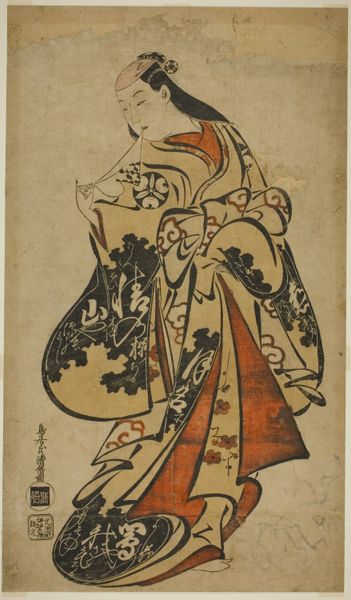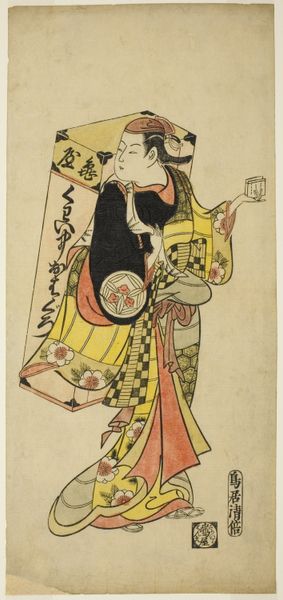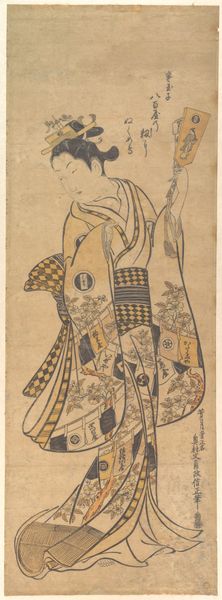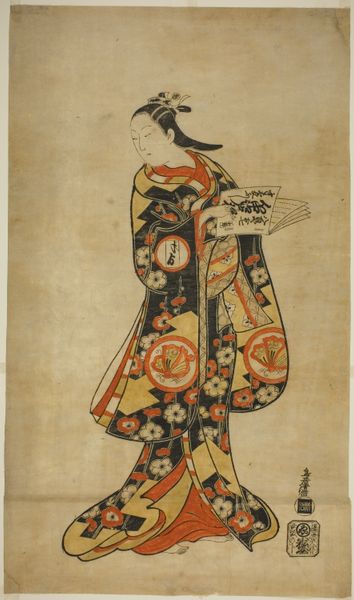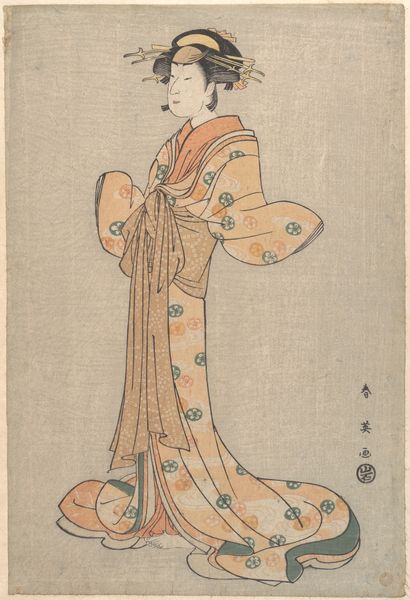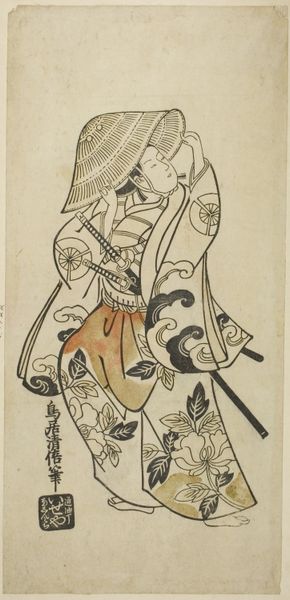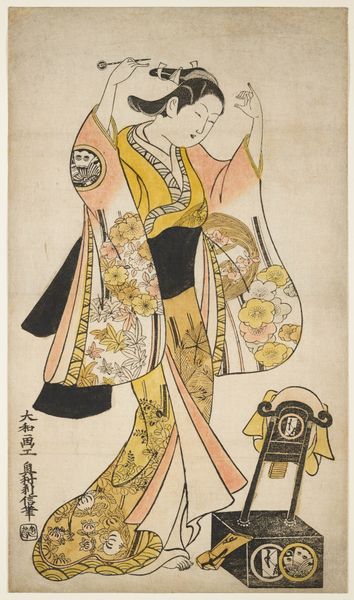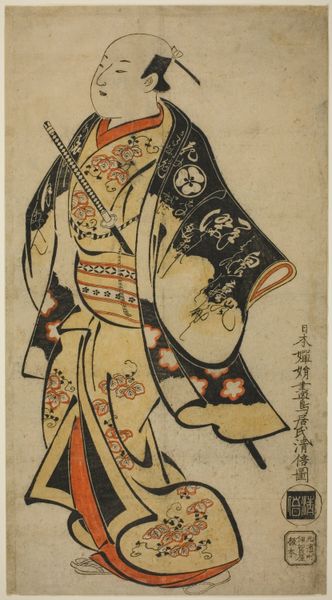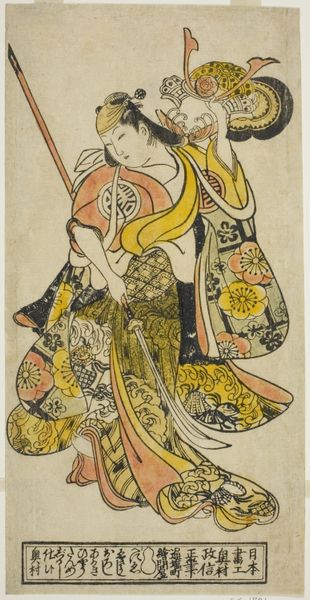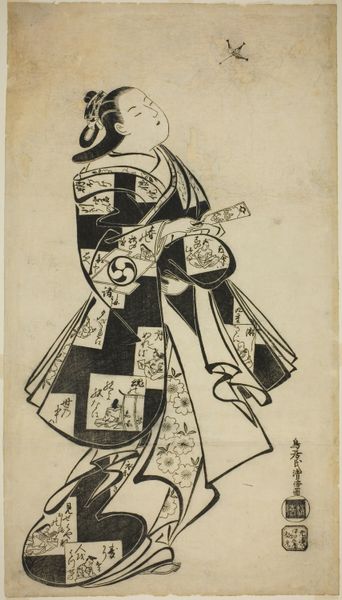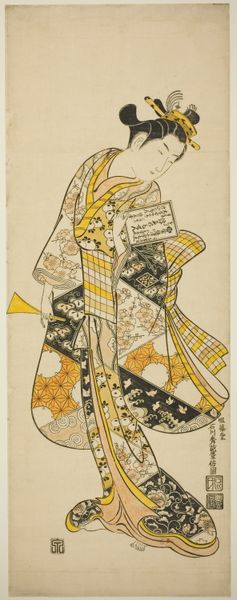
The Actor Arashi Wakano as a woman standing beneath a cherry tree c. 1724
0:00
0:00
print, woodblock-print
#
portrait
#
ink drawing
# print
#
asian-art
#
ukiyo-e
#
figuration
#
woodblock-print
Dimensions: 11 × 6 1/4 in.
Copyright: Public Domain
Okumura Toshinobu created this woodblock print, depicting the actor Arashi Wakano in a female role, in 18th century Japan. Here, the Kabuki actor's performance blurs the line between male and female identities. This speaks to the flexible social norms of Japan’s urban centers, where Kabuki flourished. The art of Kabuki had close ties with the floating world of pleasure districts and teahouses. The censorship of the Tokugawa Shogunate banned female performers in 1629, but that didn’t stop women from frequenting the theatre. Female impersonators like Arashi Wakano, became celebrities, their likeness reproduced for mass consumption in woodblock prints such as this. Understanding this print means exploring the social function of Kabuki in the Edo period, and the ways in which the theatre became a space for both social commentary and cultural production. Researching the history of Kabuki theatre, the biography of Arashi Wakano, and the censorship policies of the Tokugawa Shogunate would all contribute to a deeper understanding of this print.
Comments
No comments
Be the first to comment and join the conversation on the ultimate creative platform.
